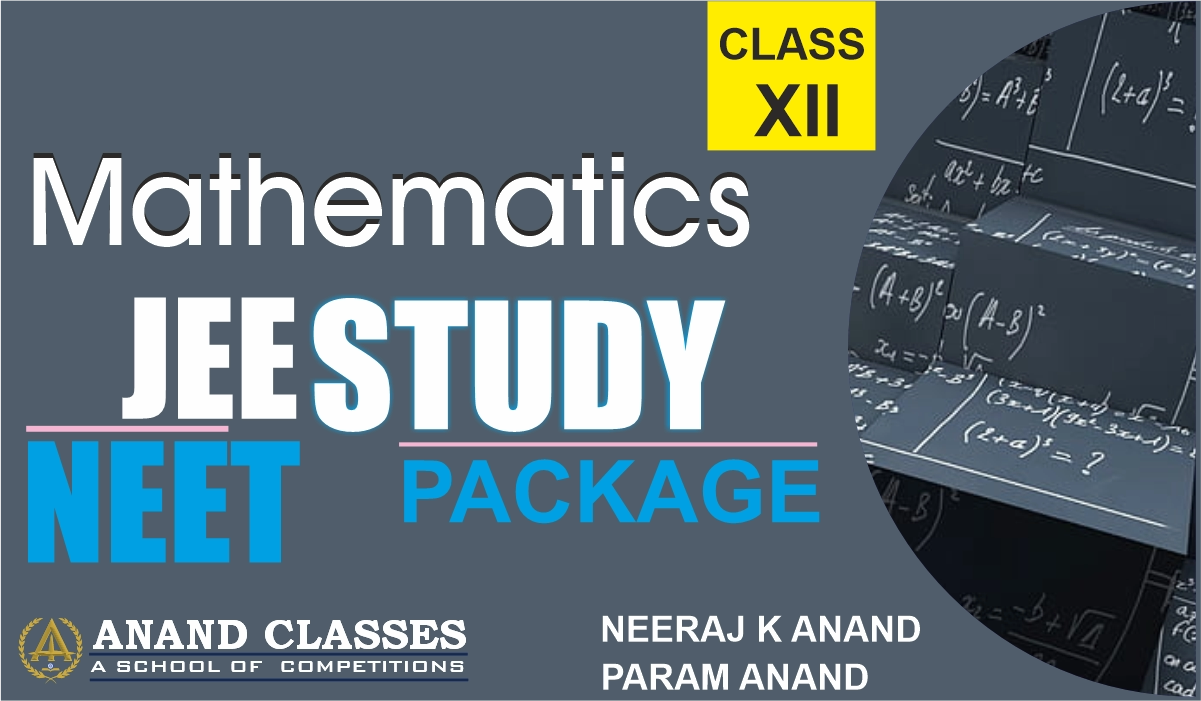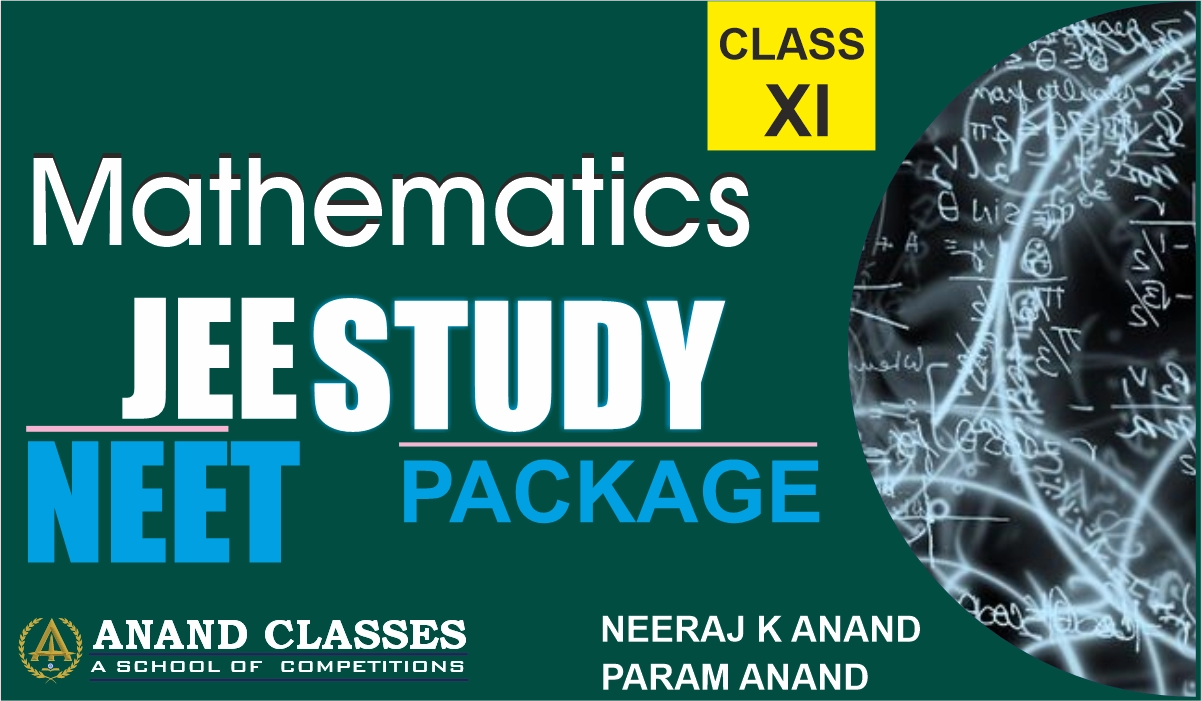Class 12 NCERT Solutions- Mathematics Chapter 1 Relations And Functions -Miscellaneous Exercise on Chapter 1
Table of Contents
Question 1. Let f : R → R be defined as f(x) = 10x + 7. Find the function g : R → R such that g o f = f o g = 1R.
Solution:
As, it is mentioned here
f : R → R be defined as f(x) = 10x + 7
To, prove the function one-one
Let’s take f(x) = f(y)
10x + 7 = 10y + 7
x = y
Hence f is one-one.
To, prove the function onto
y ∈ R, y = 10x+7
x=y−710∈Rx=10y−7∈R
So, it means for y ∈ R, there exists x=y−710x=10y−7
f(x)=f(y−710)=10(y−710)+7=y–7+7=yf(x)=f(10y−7)=10(10y−7)+7=y–7+7=y
Hence f is onto.
As, f is one-one and onto. This f is invertible function.
Let’s say g : R → R be defined as g(y)=y−710g(y)=10y−7
gof=g(f(x))=g(10x+7)=(10x+7)−710=10×10=xgof=g(f(x))=g(10x+7)=10(10x+7)−7=1010x=x
fog=f(g(x))=f(x−710)=10(x−710)+7=x–7+7=xfog=f(g(x))=f(10x−7)=10(10x−7)+7=x–7+7=x
Hence, g : R → R such that g o f = f o g = 1R.
g : R → R is defined as g(y)=y−710g(y)=10y−7
Question 2. Let f : W → W be defined as f(n) = n – 1, if n is odd and f(n) = n + 1, if n is even. Show that f is invertible. Find the inverse of f. Here, W is the set of all whole numbers.
Solution:
The function f is defined as
f(n)={n−1,nisoddn+1,nisevenf(n)={n−1,nisoddn+1,niseven
As, we know f is invertible, if and only if f is one-one and onto.
ONE-ONE
For the pair of number, we will deal with three cases:
Case 1: When both numbers p and q are odd numbers.
f(p) = p-1
f(q) = q-1
f(p) = f(q)
p-1 = q-1
p – q = 0
Case 2: When both numbers p and q are even numbers.
f(p) = p+1
f(q) = q+1
f(p) = f(q)
p+1 = q+1
p – q = 0
Case 3: When p is odd and q is even
f(p) = p-1
f(q) = q+1
f(p) = f(q)
p-1 = q+1
p – q = 2
Subtracting an odd number and even always gives a odd number, not even. Hence, the case 3 result is impossible.
So, the function f is one-one, for case 1 and case 2 only.
ONTO
Case 1: When p is odd number
f(p) = p-1
y = p-1
p = y+1
Hence, when p is odd y is even.
Case 2: When p is even number
f(p) = p+1
y = p+1
p = y-1
Hence, when p is even y is odd.
So, it means for y ∈ W, there exists p = y+1 and y-1 for odd and even value of p respectively.
Hence f is onto.
As, f is one-one and onto. This f is an invertible function.
Let’s say g : W → W be defined as g(y)={y−1,yisoddy+1,yiseveng(y)={y−1,yisoddy+1,yiseven
f = g
Hence, The inverse of f is f itself
Question 3. If f : R → R is defined by f(x) = x2– 3x + 2, find f (f(x)).
Solution:
f(x) = x2– 3x + 2
f(f(x)) = f(x2– 3x + 2)
= (x2– 3x + 2)2 – 3(x2– 3x + 2) + 2
= x4 + 9x2 + 4 -6x3 – 12x + 4x2 – 3x2 + 9x – 6 + 2
f(f(x)) = x4 – 6x3 + 10x2 – 3x
Question 4. Show that the function f : R → {x ∈ R : – 1 < x < 1} defined by f(x) = x1+∣x∣ 1+∣x∣x , x ∈ R is one one and onto function.
Solution:
As, it is mentioned here
f : R → {x ∈ R : – 1 < x < 1} defined by f(x)=x1+∣x∣ f(x)=1+∣x∣x , x ∈ R
As, we know f is invertible, if and only if f is one-one and onto.
ONE-ONE
For the pair of number, we will deal with three cases:
Case 1: When both numbers p and p are positive numbers.
The function f is defined as
Case 1: When both numbers p and q are positive numbers.
f(p)=p1+∣p∣f(p)=1+∣p∣p
f(q)=q1+∣q∣f(q)=1+∣q∣q
f(p) = f(q)
p1+∣p∣=q1+∣q∣1+∣p∣p=1+∣q∣q
p1+p=q1+q1+pp=1+qq
p(1+q) = q(1+p)
p = q
Case 2: When number p and q are negative numbers.
f(p)=p1+∣p∣f(p)=1+∣p∣p
f(q)=q1+∣q∣f(q)=1+∣q∣q
f(p) = f(q)
p1+∣p∣=q1+∣q∣1+∣p∣p=1+∣q∣q
p1−p=q1−q1−pp=1−qq
p(1-q) = q(1-p)
p = q
Case 3: When p is positive and q is negative
f(p)=p1+∣p∣f(p)=1+∣p∣p
f(q)=q1+∣q∣f(q)=1+∣q∣q
f(p) = f(q)
p1+∣p∣=q1+∣q∣1+∣p∣p=1+∣q∣q
p1+p=q1−q1+pp=1−qq
p(1-q) = q(1+p)
p + q = 2pq
Here, RHS will be negative and LHS will be positive. Hence, the case 3 result is impossible.
So, the function f is one-one, for case 1 and case 2.
ONTO
Case 1: When p>0.
f(p)=p1+∣p∣f(p)=1+∣p∣p
y=p1+py=1+pp
p=y1−y(y≠1)p=1−yy(y=1)
Case 2: When p <0
f(p)=p1+∣p∣f(p)=1+∣p∣p
y=p1−py=1−pp
p=y1+y(y≠−1)p=1+yy(y=−1)
Hence, p is defined for all the values of y, p∈ R
Hence f is onto.
As, f is one-one and onto. This f is an invertible function.
Question 5. Show that the function f : R → R given by f(x) = x3 is injective.
Solution:
As, it is mentioned here
f : R → R defined by f(x) = x3, x ∈ R
To prove f is injective (or one-one).
ONE-ONE
The function f is defined as
f(x) = x3
f(y) = y3
f(x) = f(y)
x3 = y3
x = y
The function f is one-one, so f is injective.
Question 6. Give examples of two functions f : N → Z and g : Z → Z such that g o f is injective but g is not injective.
(Hint : Consider f(x) = x and g (x) = | x |).
Solution:
Two functions, f : N → Z and g : Z → Z
Taking f(x) = x and g(x) = |x|
Let’s check, whether g is injective or not
g(5) = |5| = 5
g(-5) = |-5| = 5
As, we can see here that
Taking two integers, 5 and -5
g(5) = g(-5)
but, 5 ≠ -5
So, g is not an injective function.
Now, g o f: N → Z is defined as
g o f = g(f(x)) = g(x) = |x|
Now, as x,y∈ N
g(x) = |x|
g(y) = |y|
g(x) = g(y)
|x| = |y|
x = y (both x and y are positive)
Hence, g o f is an injective.
Question 7. Give examples of two functions f : N → N and g : N → N such that g o f is onto but f is not onto.
(Hint : Consider f(x) = x + 1 and g(x)={x−1,x>11,x=1g(x)={x−1,x>11,x=1
Solution:
Two functions, f : N → N and g : N → N
Taking f(x) = x+1 and g(x)={x−1,x>11,x=1g(x)={x−1,x>11,x=1
As, f(x) = x+1
y = x+1
x = y-1
But, when y=1, x = 0. Which doesn’t satiny this relation f : N → N.
Hence. f is not an onto function.
Now, g o f: N → N is defined as
g o f = g(f(x)) = g(x+1)
When x+1=1, we have
g(x+1) = 1 (1∈ N)
And, when x+1>1, we have
g(x+1) = (x+1)-1 = x
y = x, which also satisfies x,y∈ N
Hence, g o f is onto.
Question 8. Given a non empty set X, consider P(X) which is the set of all subsets of X.
Define the relation R in P(X) as follows: For subsets A, B in P(X), ARB if and only if A ⊂ B. Is R an equivalence relation on P(X)? Justify your answer.
Solution:
Given, A and B are the subsets of P(x), A⊂ B
To check the equivalence relation on P(X), we have to check
- Reflexive
As, we know that every set is the subset of itself.
Hence, A⊂ A and B⊂ B
ARA and BRB is reflexive for all A,B∈ P(X)
- Symmetric
As, it is given that A⊂ B. But it doesn’t make sure that B⊂ A.
To be symmetric it has to be A = B
ARB is not symmetric.
- Transitive
When A⊂ B and B⊂ C
Then of course, A⊂ C
Hence, R is transitive.
So, as R is not symmetric.
R is not an equivalence relation on P(X).
Question 9. Given a non-empty set X, consider the binary operation ∗ : P(X) × P(X) → P(X) given by A ∗ B = A ∩ B ∀ A, B in P(X), where P(X) is the power set of X. Show that X is the identity element for this operation and X is the only invertible element in P(X) with respect to the operation ∗.
Solution:
Given, P(X) × P(X) → P(X) is defined as A*B = A∩B ∀ A, B ∈ P(X)
This implies, A⊂ X and B ⊂ X
So, A∩X = A and B∩X = B ∀ A, B ∈ P(X)
⇒ A*X = A and B*X = B
Hence, X is the identity element for intersection of binary operator.
Question 10. Find the number of all onto functions from the set {1, 2, 3, … , n} to itself.
Solution:
Onto function from the set {1,2,3,…..,n} to itself is just same as the permutations of n.
1×2×3×4×…….×n
Which is n!.

